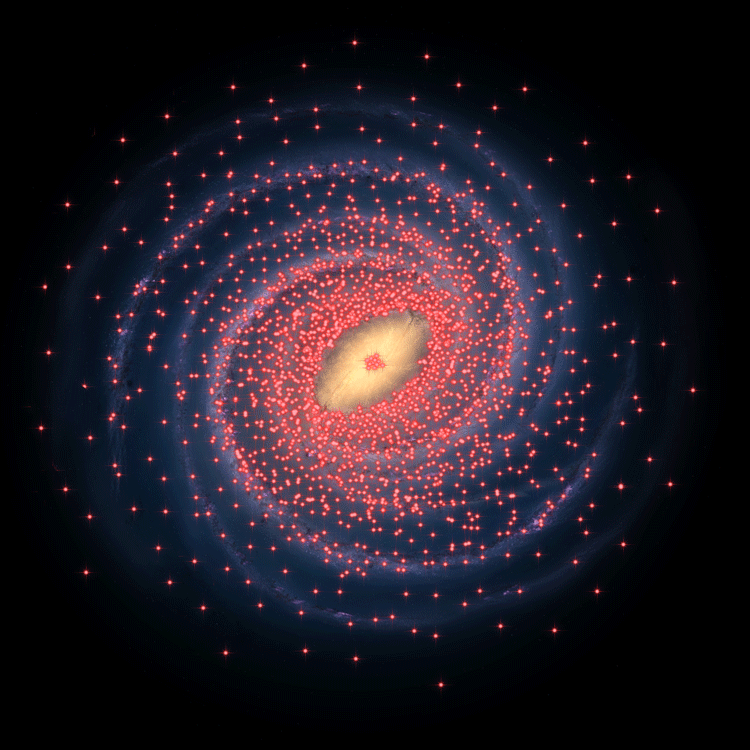The Milky Way is a spiral galaxy containing many billions of stars with our Sun about 26,000 light years from its centre. Measuring the distribution of these stars is crucial to our understanding of how our Galaxy formed and evolved. Pulsating stars called Cepheids are ideal for this. They are much younger (between 10 and 300 million years old) than our Sun (4.6 billion years old) and they pulsate in brightness in a regular cycle. The length of this cycle is related to the luminosity of the Cepheid, so if astronomers monitor them they can establish how bright the star really is, compare it with what we see from Earth, and work out its distance. Scientists havc found hardly any Cepheids in a huge region stretching for thousands of light years from the core of the Galaxy. This suggests that a large part of our Galaxy, called the Extreme Inner Disk, has no young stars.







